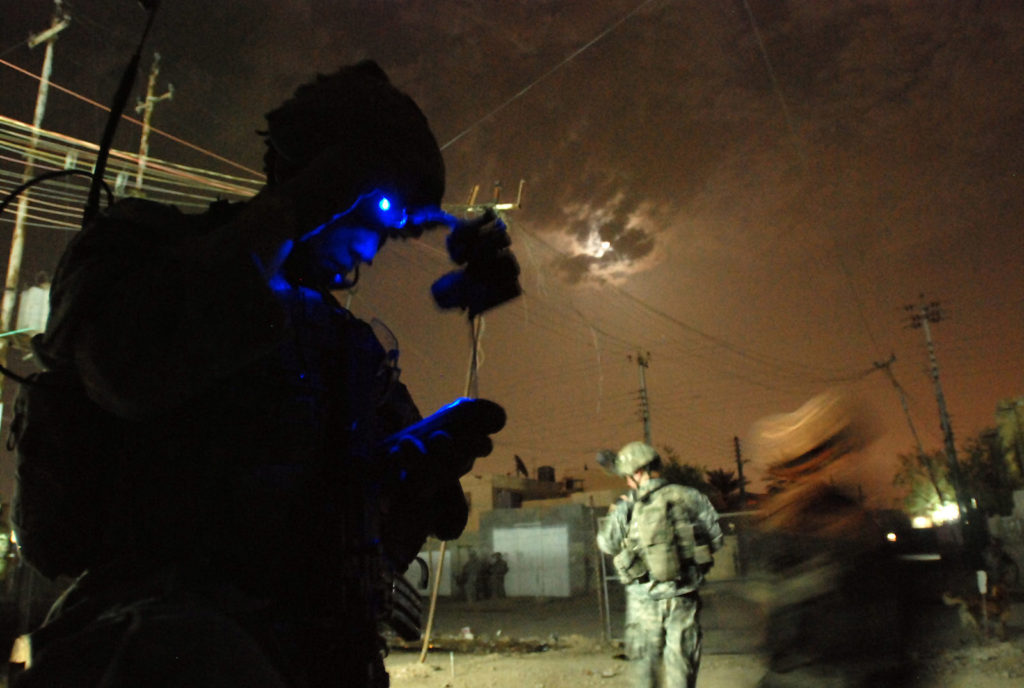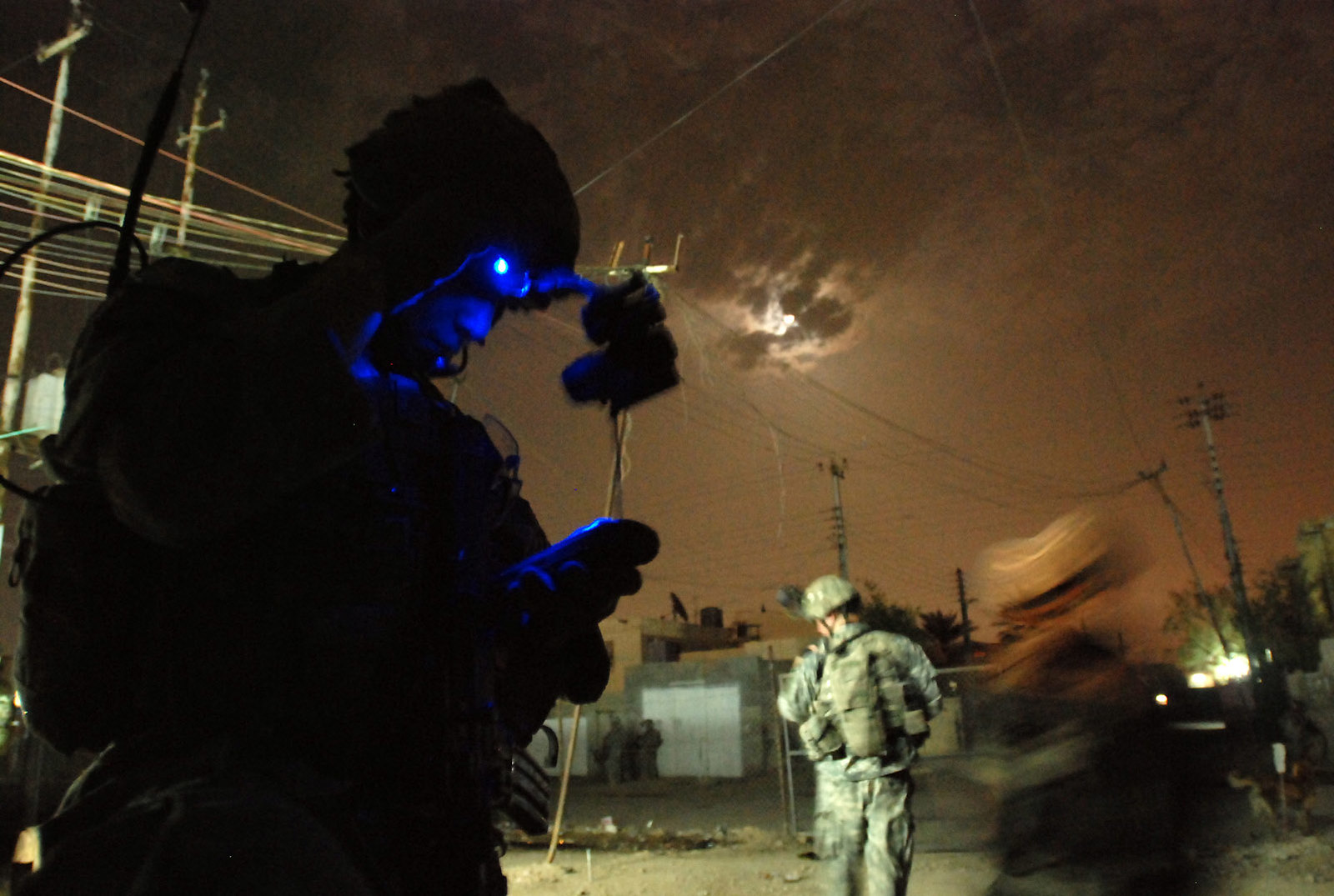

Topic Objective
Investigate and develop a smart digitized map populated with threat data collected by a network of target geo-location devices that can work in a GPS or GPS-denied/degraded environment for legacy and next generation handheld detectors, and for explosive breacher mine detection for targeted neutralization of the explosive hazard threat.
Description
The U.S. Army has a need for a smart, networked threat map that can be integrated with the handheld mine detector as the sensor, and the designated explosive breaching system as the “shooter.” Currently, fielded handheld mine and Improvised Explosive Device (IED) detectors do not have GPS or positioning sensors to record the location of detected threats. Additionally, current mine detection capabilities are limited, which do not allow engagement with specific mine threats. In this effort, data from the handheld detectors will be analyzed using artificial intelligence (AI) or advanced algorithms to accurately identify surface laid and buried mines. The data will then also be used to populate a threat map that can be utilized by the advanced explosive breaching system for selective neutralization of targets. This will greatly reduce the amount of ammunition needed to clear a mine field versus creating an area effect across the entire minefield. The digitized threat map will also provide Soldiers with situational awareness of existing or neutralized explosive hazard threats on the battlefield.
Phase I
Phase I will consist of investigation and evaluation of the combination of artificial intelligence (AI) with advanced mine detection algorithm software—the combination of which will undergo laboratory testing. Further hardware-in-the-loop testing and laboratory tests will be conducted to integrate the “smart” mine detection algorithm software with the explosive breaching system requirements. The results of Phase I will demonstrate the integration of the sensor with the explosive breacher. Successful laboratory tests and demonstration will conclude Phase I and specific requirements for Phase II will be identified.
Phase II
Phase II will further develop the advanced AI/mine detection software demonstrated in Phase I in a relevant environment and demonstrate that the detectors can detect the threat. Phase II will also generate the digital threat map of an instigated minefield with accurate locations of the threats, mines, and IEDs. The digitized map will interface with the explosive breacher, which will receive and process the inputs from the threat map to eradicate all identified threats.
Phase III
Success of Phase II will allow transition of the technology to fielded AN/PSS-14C Mine Detection Systems, NXGNHH, Integrated Visual Augmentation System (IVAS), and the Tactical Assault Kit (TAK).
Submission Information
To submit full proposal packages, and for more information, visit the DSIP Portal.

References:
US Army. (2019). 2019 Army Modernization Strategy: Investing in the Future. Retrieved from: https://www.army.mil/e2/downloads/rv7/2019_army_modernization_strategy_final.pdf US Department of Defense. (2018). 2018 National Defense Strategy of the United States Summary, 11. Retrieved from: https://www.defense.gov/Portals/1/Documents/pubs/2018-National-Defense-Strategy-Summary.pdf
Topic Objective
Investigate and develop a smart digitized map populated with threat data collected by a network of target geo-location devices that can work in a GPS or GPS-denied/degraded environment for legacy and next generation handheld detectors, and for explosive breacher mine detection for targeted neutralization of the explosive hazard threat.
Description
The U.S. Army has a need for a smart, networked threat map that can be integrated with the handheld mine detector as the sensor, and the designated explosive breaching system as the “shooter.” Currently, fielded handheld mine and Improvised Explosive Device (IED) detectors do not have GPS or positioning sensors to record the location of detected threats. Additionally, current mine detection capabilities are limited, which do not allow engagement with specific mine threats. In this effort, data from the handheld detectors will be analyzed using artificial intelligence (AI) or advanced algorithms to accurately identify surface laid and buried mines. The data will then also be used to populate a threat map that can be utilized by the advanced explosive breaching system for selective neutralization of targets. This will greatly reduce the amount of ammunition needed to clear a mine field versus creating an area effect across the entire minefield. The digitized threat map will also provide Soldiers with situational awareness of existing or neutralized explosive hazard threats on the battlefield.
Phase I
Phase I will consist of investigation and evaluation of the combination of artificial intelligence (AI) with advanced mine detection algorithm software—the combination of which will undergo laboratory testing. Further hardware-in-the-loop testing and laboratory tests will be conducted to integrate the “smart” mine detection algorithm software with the explosive breaching system requirements. The results of Phase I will demonstrate the integration of the sensor with the explosive breacher. Successful laboratory tests and demonstration will conclude Phase I and specific requirements for Phase II will be identified.
Phase II
Phase II will further develop the advanced AI/mine detection software demonstrated in Phase I in a relevant environment and demonstrate that the detectors can detect the threat. Phase II will also generate the digital threat map of an instigated minefield with accurate locations of the threats, mines, and IEDs. The digitized map will interface with the explosive breacher, which will receive and process the inputs from the threat map to eradicate all identified threats.
Phase III
Success of Phase II will allow transition of the technology to fielded AN/PSS-14C Mine Detection Systems, NXGNHH, Integrated Visual Augmentation System (IVAS), and the Tactical Assault Kit (TAK).
Submission Information
To submit full proposal packages, and for more information, visit the DSIP Portal.
References:
US Army. (2019). 2019 Army Modernization Strategy: Investing in the Future. Retrieved from: https://www.army.mil/e2/downloads/rv7/2019_army_modernization_strategy_final.pdf US Department of Defense. (2018). 2018 National Defense Strategy of the United States Summary, 11. Retrieved from: https://www.defense.gov/Portals/1/Documents/pubs/2018-National-Defense-Strategy-Summary.pdf
